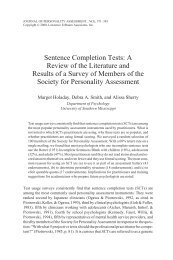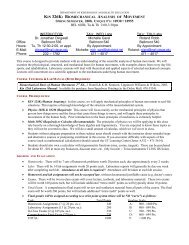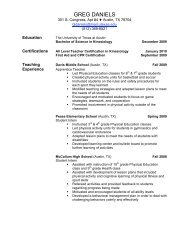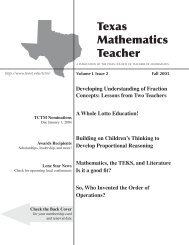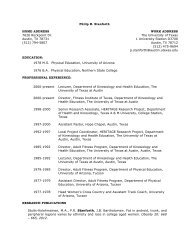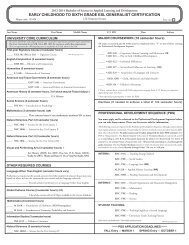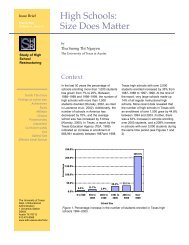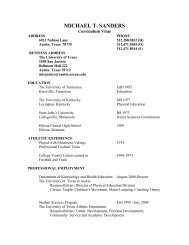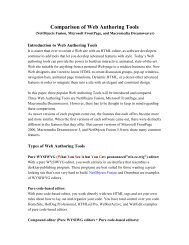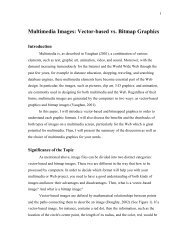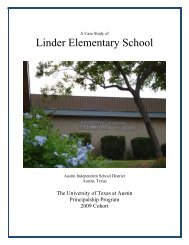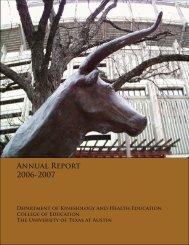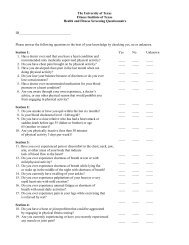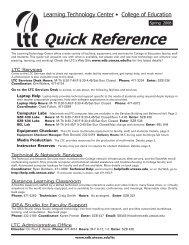The Algebraic Nature of Fractions: Developing Relational Thinking ...
The Algebraic Nature of Fractions: Developing Relational Thinking ...
The Algebraic Nature of Fractions: Developing Relational Thinking ...
You also want an ePaper? Increase the reach of your titles
YUMPU automatically turns print PDFs into web optimized ePapers that Google loves.
<strong>Relational</strong> <strong>Thinking</strong> and <strong>Fractions</strong> 23<br />
suggesting that standard algorithms for fraction operations have no place in developing<br />
fluency with number operations. Pr<strong>of</strong>icient thinkers use them when they see no way to<br />
exploit the number relationships in a problem. However, we are arguing that when<br />
children are supported to develop <strong>Relational</strong> <strong>Thinking</strong> in elementary school, their<br />
knowledge <strong>of</strong> generalized properties <strong>of</strong> number and operation becomes explicit and can<br />
serve as a foundation for learning high-school algebra in ways that mitigate the<br />
development <strong>of</strong> mistakes and misconceptions.<br />
A Conjecture Concerning <strong>Relational</strong> <strong>Thinking</strong> as a Tool in Learning New Number<br />
Content<br />
Jill and Keenan used fundamental properties <strong>of</strong> operations and equality and other<br />
notable relationships, such as<br />
3<br />
8 × 8 = 3, as tools in their strategies to divide fractions. <strong>The</strong><br />
use <strong>of</strong> these relationships was coordinated within a goal structure and is a hallmark <strong>of</strong><br />
<strong>Relational</strong> <strong>Thinking</strong>. In this section we discuss a critical and perhaps surprising<br />
implication <strong>of</strong> a focus on <strong>Relational</strong> <strong>Thinking</strong> in the elementary curriculum with respect<br />
to the role <strong>of</strong> other types <strong>of</strong> tools such as concrete materials and models in facilitating the<br />
development <strong>of</strong> children’s understanding <strong>of</strong> number operations involving fractions (as<br />
well as decimals and integers – which are beyond the scope <strong>of</strong> this chapter).<br />
Some approaches to teaching for understanding emphasize the use <strong>of</strong> concrete<br />
materials such as base-ten blocks or fraction strips to model abstract relationships (e.g.,<br />
van de Walle, 2007). <strong>The</strong> use <strong>of</strong> such materials has at times been seen as a universal<br />
remedy to children’s difficulties in understanding mathematics. Several studies have<br />
shown, however, that concrete materials alone are insufficient at best and at worst,



